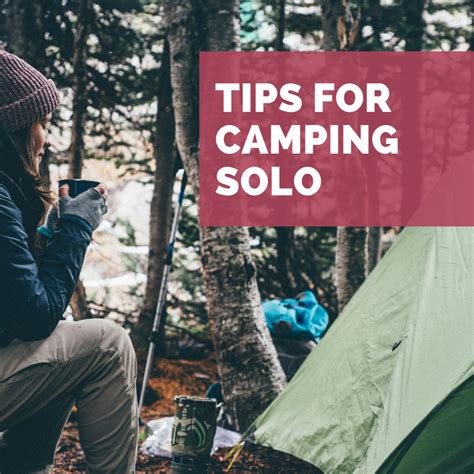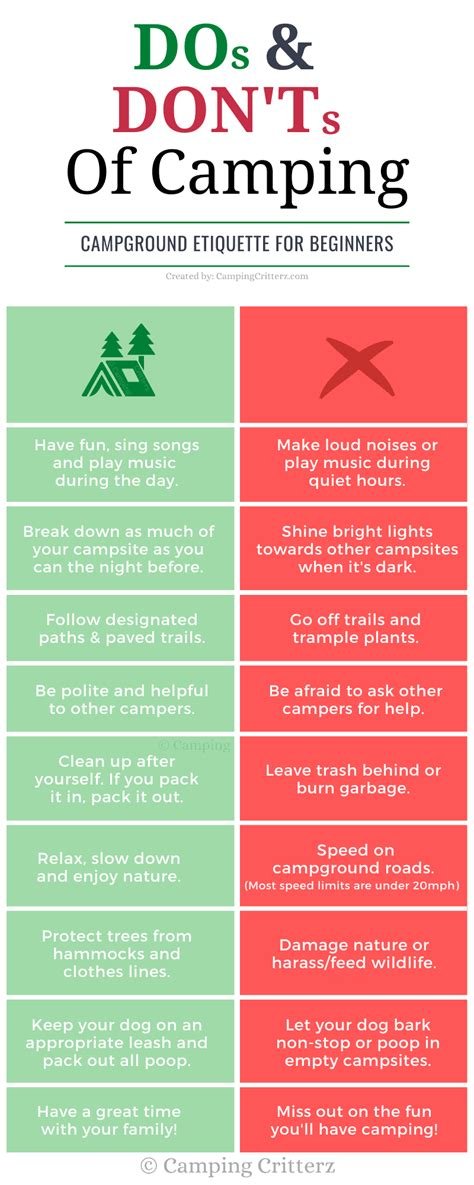Camping Alone: Safety Precautions and Solo Adventure Tips
Are you considering a solo camping trip but feeling a bit unsure about how to stay safe and prepared? Camping alone can be an incredibly rewarding experience, but it’s important to take some precautions and plan ahead. In this blog post, we’ll cover everything you need to know about camping solo, from assessing the potential risks to enhancing your overall adventure. We’ll explore essential safety precautions, discuss the essential gear you’ll need, and provide tips for choosing the perfect campsite. We’ll also delve into creating a safety plan, navigating wildlife encounters, and prioritizing your mental and physical well-being while camping alone. By the end of this post, you’ll feel confident and prepared to embark on your solo camping adventure. So, grab a notebook and pen, and let’s get started on planning your next outdoor excursion!
Assessing the Risks: Understanding Potential Dangers
Before embarking on any camping trip, it is crucial to assess the potential risks that may arise in the great outdoors. Understanding the dangers that could be encountered is the first step towards ensuring a safe and enjoyable experience.
One of the most common risks associated with camping is the possibility of encountering wildlife. Understanding the behaviors and habitats of different animals can help campers mitigate these dangers and minimize the chances of a negative interaction.
Another important aspect of assessing risks is being aware of weather conditions. Sudden changes in weather can pose serious dangers to campers, so it is important to keep an eye on the forecast and be prepared for any adverse conditions that may arise.
It is also crucial to consider the terrain of the campsite, as certain features such as steep cliffs, unstable ground, or bodies of water can present dangers to campers. Understanding the terrain is essential for choosing a safe and suitable campsite.
Preparing for the Journey: Essential Camping Gear Checklist
When embarking on a camping trip, it is crucial to have a comprehensive checklist of essential camping gear to ensure a safe and enjoyable experience. The right equipment can make all the difference in the great outdoors, so taking the time to prepare properly is essential.
First and foremost, a sturdy and reliable tent is of utmost importance. It will serve as your shelter and protection from the elements, so be sure to choose a durable and weather-resistant option. Additionally, don’t forget to bring along a sleeping bag and sleeping pad for a comfortable and restful night’s sleep.
Next, consider the cooking essentials such as a portable stove, cookware, and utensils. These items will allow you to prepare hot meals and beverages, adding to the overall enjoyment of your camping experience. A reliable campfire starter and lanterns are also must-haves for providing light and warmth during the evenings.
Lastly, it is important to pack appropriate clothing and footwear suitable for the outdoor environment. This includes moisture-wicking layers, waterproof outerwear, and sturdy hiking boots. Being prepared for various weather conditions will ensure your comfort and safety while exploring the wilderness.
Choosing the Perfect Campsite: Factors to Consider
When it comes to choosing the perfect campsite, there are several factors to consider in order to ensure a safe and enjoyable outdoor experience. One of the most important factors to consider is the location of the campsite. It’s crucial to choose a location that is easily accessible and not too far from amenities, yet still offers a sense of seclusion and natural beauty. Additionally, the terrain of the campsite should be taken into account. It’s important to choose a level and well-drained site to set up your tent or RV.
Another important consideration is the weather conditions of the area. Choosing a campsite in an area known for extreme weather conditions can put you at risk and ruin your camping experience. It’s important to research the typical weather patterns of the area and choose a campsite that is less susceptible to extreme weather.
Furthermore, it’s essential to consider the amenities and facilities available at the campsite. If you’re camping with children, for example, it might be important to choose a site with clean restroom facilities and access to running water. On the other hand, if you’re looking for a more rugged camping experience, you may want to choose a more primitive site with fewer amenities.
Last but not least, it’s crucial to consider the ecosystem and wildlife of the area when choosing a campsite. It’s important to choose a site that is respectful of the local ecosystem and wildlife, and to be aware of any potential dangers or encounters with wildlife.
Creating a Safety Plan: Communication and Emergency Protocols
When venturing into the great outdoors, it’s essential to have a safety plan in place to effectively communicate and handle emergencies. The first step in creating a safety plan is establishing communication protocols. This includes ensuring that all campers have a reliable means of contact, such as walkie-talkies or cell phones with service. It’s also important to designate a meeting spot in case individuals get separated, and to establish a check-in schedule to monitor everyone’s whereabouts.
Secondly, it’s crucial to develop emergency protocols in the event that something goes wrong. This includes having a first-aid kit readily available and ensuring that all campers are trained in basic first-aid procedures. Additionally, campers should be educated on how to respond to various emergency situations, such as getting lost or encountering wildlife.
Furthermore, it’s essential to establish a clear communication plan in case of emergencies. This includes designating an emergency contact person who is not on the trip, and ensuring that all campers have their contact information. Having a designated protocol for communicating emergencies, such as using specific keywords or signals, can help streamline the response process and ensure that everyone is on the same page.
Creating a safety plan that includes effective communication and emergency protocols is crucial for ensuring the well-being of all campers. By taking the time to establish clear guidelines and procedures, individuals can have peace of mind knowing that they are prepared for any situation that may arise during their camping adventure.
Solo Adventure Tips: Enhancing Your Camping Experience
Embarking on a solo camping adventure can be an incredibly rewarding experience, allowing you to disconnect from the hustle and bustle of daily life and reconnect with nature. However, it’s important to be well-prepared and prioritize safety when venturing out alone.
One essential tip for enhancing your solo camping experience is to thoroughly research your chosen campsite before setting out. Look for reviews and recommendations from other campers to ensure that the location is safe and suitable for a solo traveler.
Additionally, packing the right gear is crucial when camping alone. In addition to the basics such as a tent, sleeping bag, and cooking supplies, consider bringing a personal locator beacon and a well-stocked first aid kit to ensure that you’re prepared for any unexpected situations.
Lastly, don’t underestimate the importance of communication when embarking on a solo camping trip. Be sure to inform someone you trust of your planned itinerary and check in with them regularly. This simple precaution can provide peace of mind for both you and your loved ones.
Navigating Wildlife Encounters: Dos and Don’ts
When venturing into the great outdoors, encountering wildlife can be an exhilarating experience. However, it’s important to remember that wildlife encounters can also pose potential dangers. Therefore, it’s crucial to be prepared and knowledgeable about how to navigate these encounters safely.
First and foremost, it’s essential to keep a safe distance from wildlife. Approaching or feeding wild animals can be dangerous for both you and the animals. It’s important to remember that wild animals are just that – wild. Getting too close can provoke defensive behavior, putting yourself and the animal at risk.
Do make noise while hiking or camping to alert wildlife of your presence. This gives them the opportunity to move away from you without feeling threatened. On the other hand, don’t startle or surprise an animal, as this can lead to a defensive reaction.
In the event that you do encounter wildlife, it’s important to remain calm and avoid making sudden movements. Slowly back away from the animal while maintaining eye contact. This shows the animal that you are not a threat and allows it to feel in control of the situation, reducing the likelihood of an aggressive response.
Mindful Self-Care: Prioritizing Mental and Physical Well-being
When it comes to embracing a lifestyle of mindful self-care, it is crucial to prioritize both mental and physical well-being. Taking the time to focus on nurturing your mind and body can have a significant impact on your overall quality of life.
One of the first steps in prioritizing mental and physical well-being is to carve out time for self-reflection and relaxation. This may include practices such as meditation, yoga, or simply taking a walk in nature. By allowing yourself the time and space to unwind, you can reduce stress and promote a greater sense of calm and inner peace.
Additionally, making healthy lifestyle choices plays a key role in mindful self-care. This involves nourishing your body with nutritious foods, staying hydrated, and engaging in regular physical activity. By taking care of your physical health, you are better equipped to manage the demands of daily life and maintain a sense of balance.
Finally, seeking support from others and establishing meaningful connections can greatly contribute to mindful self-care. Surrounding yourself with positive influences and engaging in open, honest communication can foster a sense of belonging and promote emotional well-being.
Frequently Asked Questions
What are some potential dangers of camping alone?
Some potential dangers of camping alone include getting lost, encountering wildlife, adverse weather conditions, and lack of access to assistance in case of emergency.
What are some essential items to include in a camping gear checklist for solo camping?
Some essential items to include in a camping gear checklist for solo camping are a reliable tent, sleeping bag, first-aid kit, navigation tools, multi-tool, food and water supplies, and a communication device.
What factors should be considered when choosing the perfect campsite for solo camping?
When choosing the perfect campsite for solo camping, factors to consider include proximity to help, flat and dry ground, natural barriers for protection, and availability of natural resources like water and firewood.
Why is it important to create a safety plan for solo camping?
It is important to create a safety plan for solo camping to establish communication and emergency protocols, ensuring that someone knows your itinerary, and having a plan for potential emergencies such as getting lost or injured.
What are some tips for enhancing the solo camping experience?
Some tips for enhancing the solo camping experience include embracing solitude, practicing mindfulness, engaging in outdoor activities, and learning new skills related to camping and wilderness survival.
What are some dos and don’ts for navigating wildlife encounters while camping alone?
Some dos for navigating wildlife encounters while camping alone include staying calm, making noise to alert animals of your presence, and packing away food and scented items. Some don’ts include approaching or feeding wildlife, leaving food unattended, and running away from an encounter.
How can solo campers prioritize their mental and physical well-being during a camping trip?
Solo campers can prioritize their mental and physical well-being during a camping trip by practicing self-care activities such as meditation, exercise, rest, and maintaining a positive mindset. It is also important to be aware of one’s limits and seek help if needed.





